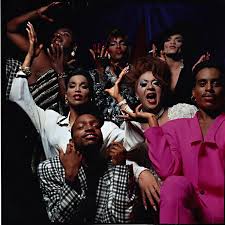Struggle and Brilliance in Paris is Burning

I found the full documentary, Paris is Burning, on YouTube for free when I went to search Madonna’s 1990 smash hit “Vogue.” I realized that this documentary offers richer ground for reflection.
There is a complicated irony in having a song by a cisgendered white woman like Madonna bring voguing to the mainstream. Madonna never needed to hide her glamour the way that the queens of the Harlem ballroom did. Like this film, there is no denying that Madonna is a gay icon and in many ways an ally, but not without some controversy given consideration of privilege and appropriation relative to the movement.
Whether you love it or hate it, or somewhere in between (me), Paris is Burning serves a rich slice of American and LGBTQ+ history. This documentary was selected for preservation in the United States National Film Registry in 2016.
Some controversy surrounds how the filmmaker, Jennie Livingston, a white woman, shot and edited the interviews and footage with Black and Latinx drag queens. The film has been criticized for not fully examining how colonialism and whiteness shape who gets to tell these stories. Feminist writer, bell hooks, wrote an especially insightful critique titled “Is Paris Burning?” in her book Black Looks: Race and Representation (1992). hooks’ essay emphasizes and explores the film’s missed opportunities to unpack the meaning of gender-bending and imitating whiteness, relative to power and control. Whether or not Livingston made the best choices for the film, the images and voices she captured give us a glimpse into the dynamic lives of LGBTQ+ New Yorkers of color at the end of the 20th century.
I recommend this documentary to anyone who wants to look back and honor a part of the LGBTQ+ scene in the New York in the 1990s, and its significant influence on our mainstream culture and advocacy. It is a reminder of progress we have made, and progress we still dream of.
Paris is Burning was filmed over several years spanning the mid-1980s up to1989. It was released in September 1990. Yes, six months after Madonna’s “Vogue,” for those of you minding the timeline. “Voguing” as a dance form had been around for about 30 years before it hit the mainstream. It emerged as a dance style and culture from the Harlem Ballroom scene in the 1960s, cultivated by Black and Latinx performers. If you watch Paris is Burning, you will see some amazing voguing.
The film illuminates so many aspects of the performers’ lives: the brilliant, the sad, and the horrifyingly tragic. I don’t want to cheerily gloss over the countless struggles the performers share by skipping to a celebration of resilience. There is a fine line between celebrating creative feats of survival and glossing over very real hardships due to systemic oppression. I don’t want to justify anything these performers went through by sounding like it was all worth it for art.
Yet, it’s precisely out of these struggles that the balls emerged. The balls were created as vibrant spaces where marginalized people could embody the very identities society tried to deny them. This is why there is such sensitivity to appropriation of the movement. Black and Latinx performing artists were so successful at creating fabulous expression to escape hardship that people without a deep understanding take trends from the Harlem balls for granted as just glamor and fun. In her critique of the film, hooks laments moments of incongruent laughter and cheering from white film viewers who seemed to misunderstand the experiences depicted.
As a therapist, the creative expression and its context in Paris is Burning fascinates me. I prize creativity as one of the most effective interventions to heal and prevent trauma. Movement in general has been shown to literally break up the chemical impact of trauma. Dance incorporates both creativity and physical movement, which puts it at top of my list of best ways to overcome mental health struggles.
Here are some of my favorite creative acts of resilience highlighted in the film:
The creation of community. The film depicts the joy, and connection found in the Harlem ballrooms. Later in the film they detail the systemic layers of this community by explaining how “houses” work. Houses are loving networks of found families. They are named for notorious ball-walkers.
The leader of each house is called the “mother.” The mother often does the most nurturing and is the most powerful. The houses serve both as support systems, and as fiercely competitive teams in the balls. The competition is depicted as mostly friendly between the houses.
Dance Battles and Voguing. Voguing emerged from dance battles, where ball-walkers could sublimate conflict into stylized movement. Voguing is a full-body art form that transforms conflict, admiration, and self-expression into physical choreography. Just imagine a world where this is a norm for self-expression! I want permission to dance my feelings at someone. If someone “throws shade” at me, I want to playfully lay myself out on the floor and twist my body around them in aggressively creative shapes. I wouldn’t even care if I lost a battle!
One of the queens, Dorian Corey said it best, “If everyone went to balls and did less drugs, it would be a fun world, wouldn’t it?”
Overall, Paris is Burning is story of reaching for joy to pull ourselves and each other out of trauma. It’s a story of hopes and dreams for a more peaceful and inclusive world. It’s a reminder that identity and expression are deeply tied to healing. Trauma compromises our identity, it frazzles our development of who we are, it makes us question who we are. LGBTQ+ Pride and advocacy is a movement against identity compromising trauma. When we support the right to existence and expression beyond binaries and boxes, we support the expansiveness in all of us. In my work as a therapist, I witness how giving people space to be fully themselves opens powerful pathways toward healing and connection.
